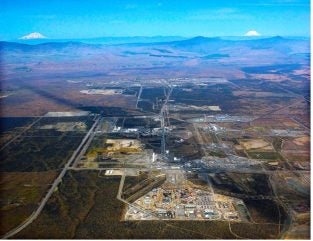
The US Department of Energy (DOE) has approved Hanford Tank Waste Operations & Closure (H2C) to begin the Hanford Integrated Tank Disposition Contract (ITDC) at the Hanford site in southeastern Washington state. Earlier in 2024, DOE announced that the contract had been awarded to H2C, a joint venture led by a BWXT Technical Services Group and including Amentum and Fluor companies. A protest against this award was recently dismissed in the US Court of Federal Claims. DOE has now issued H2C a notice to proceed.
“We are very excited to begin working with DOE on this incredibly important cleanup mission,” said Heatherly Dukes, president of BWXT Technical Services Group. “H2C’s leadership team has been deployed and brings 170 years of combined experience in tank waste disposition and disciplined nuclear operations.”
The scope of the ITDC includes operation of Hanford tank farm facilities, eventual operation of the Waste Treatment and Immobilisation Plant, and responsibility for other core functions such as project management, security and emergency services, business performance, and environment, safety, health and quality.
The contract has an estimated ceiling of $45bn over a 10-year ordering period for environmental management operations. Fluor said it will recognise its share of earnings from this new contract using the equity method of accounting beginning in the fourth quarter of 2024.
“Fluor and our H2C partners are ready to get to work on this important DOE cleanup mission,” said Tom D’Agostino, Group President of Fluor’s Mission Solutions business. “We’ve been a proud member of the Tri-Cities community for more than 25 years, beginning with the Project Hanford Management Contract in 1996 and continuing through to our role today on the Central Plateau Cleanup Contract.
Hanford is home to 177 underground waste storage tanks – a legacy of nuclear weapons development and nuclear energy research during World War II and Cold War. These include 149 single-shell tanks (SST), and 28 double-shell tanks (DST), ranging from 55,000 to 1.265m gallons in capacity. The tanks are organised into 18 different groups called farms. Currently, the site’s underground tanks store approximately 56m gallons of radioactive and chemical waste.
Under a new agreement signed in May with Washington State Department of Ecology (Ecology), and US Environmental Protection Agency (EPA), DOE has decided to immobilise a large portion of the low-activity (liquid) tank waste in grout after it’s been treated to remove radioactive caesium and solids.






